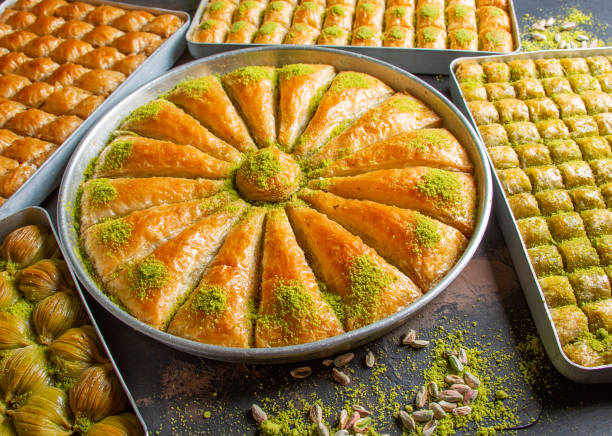History of Baklava: When it comes to Turkish cuisine, few desserts are as iconic and beloved as baklava. This rich, layered pastry, filled with nuts and sweetened with syrup, has become synonymous with Turkish hospitality and culture. But baklava is more than just a dessert—it’s a centuries-old tradition that reflects the diverse influences and history of the region.
History of Baklava: A Culinary Legacy
Baklava’s roots can be traced back to the Ottoman Empire, though its exact origins are often debated. Some suggest it may have been influenced by earlier civilizations, such as the Assyrians, Greeks, or Romans, but it was during the Ottoman era that baklava became the luxurious dessert we know today. It was served in the palaces of sultans, where skilled pastry chefs perfected the art of layering phyllo dough, nuts, and syrup to create this delicate and flavorful sweet.
History of Baklava: Ingredients that Make Baklava Special
History of Baklava: What makes Turkish baklava stand out is the quality of its ingredients. Traditionally, phyllo dough is rolled thinly by hand, creating multiple layers of crisp, flaky pastry. The filling typically consists of chopped pistachios or walnuts, which are abundant in Turkey. The syrup, made from a combination of honey or sugar and lemon juice, is poured over the baked pastry, allowing it to soak into the layers and give baklava its signature sweetness.
- Phyllo Dough: Delicate and paper-thin layers that bake into a crispy texture.
- Pistachios or Walnuts: These nuts add richness and flavor to every bite.
- Syrup: A blend of sugar, honey, and lemon juice to sweeten and moisten the pastry.
Regional Variations of Baklava
Baklava is enjoyed throughout Turkey, but different regions have their own unique takes on the dessert. In Gaziantep, for example, baklava is typically made with pistachios, while other areas might use walnuts. The sweetness of baklava also varies depending on local tastes—some regions prefer a lighter syrup, while others enjoy a more decadent, honey-drenched version.
- Gaziantep Baklava: Known for its use of green pistachios and slightly less syrup.
- Anatolian Baklava: Often made with walnuts and a more generous amount of syrup.
- Istanbul Baklava: Typically sweeter and richer, often served in smaller, bite-sized portions.
The Art of Making Baklava: A Time-Honored Tradition
Making baklava is both an art and a science. The process requires skill and patience, particularly when it comes to preparing the phyllo dough. Each layer must be rolled out incredibly thin and stacked precisely to create the flaky, crispy texture that baklava is famous for. Once the layers are assembled with the nuts in between, the dessert is baked until golden brown and then drenched in syrup while still hot.
Baklava in Modern Times
Today, baklava continues to be a popular dessert in Turkey and beyond. It is often served during special occasions such as Ramadan, weddings, and family gatherings. While traditional recipes remain popular, modern variations of baklava are also emerging, featuring ingredients like chocolate, fruit fillings, and even cream.
History of Baklava: A Taste of Turkish Heritage
Baklava is not just a dessert—it’s a symbol of Turkish culture and tradition. Whether you enjoy it with pistachios or walnuts, with a light drizzle of syrup or drenched in honey, baklava remains one of the most beloved desserts in Turkish cuisine. So next time you indulge in a slice of this rich, flaky pastry, remember that you’re savoring a piece of history.


